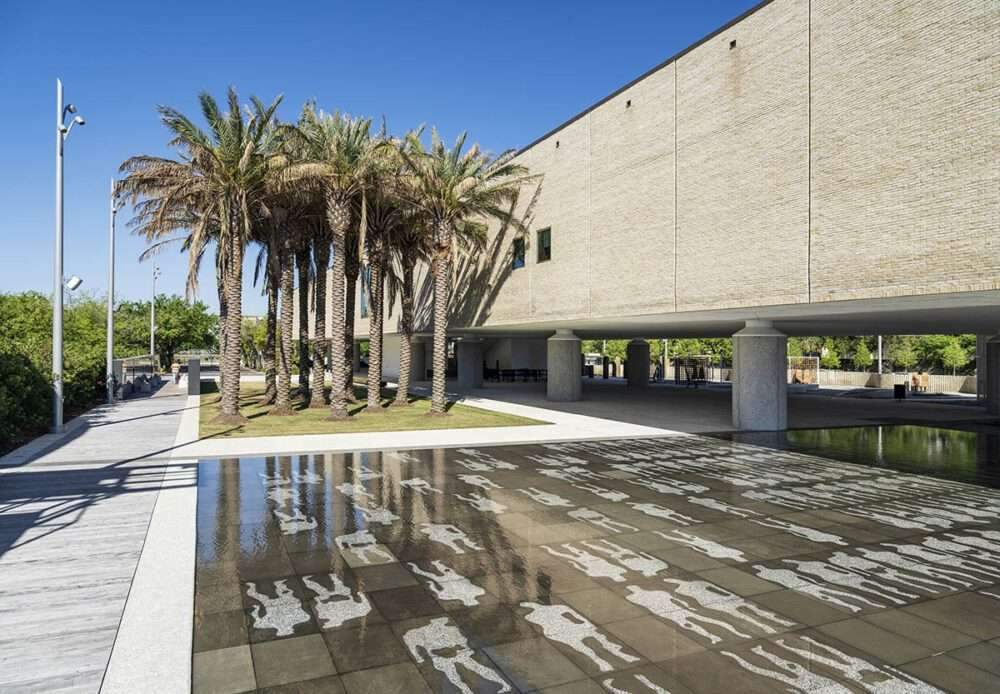Short Biography of Zaha Hadid
Architect Zaha Hadid was born on October 31, 1950 in Baghdad to a wealthy Iraqi family. At the age of ten, accompanied by her two brothers, she left to study in Europe. In the following years, Zaha Hadid began studying mathematics at the American University of Beirut in Lebanon, and then began studying architecture at the Architectural Association School of Architecture in London.
Upon graduation, she worked at the Office for Metropolitan Architecture, a Rotterdam-based architectural firm, where she worked alongside its founder Rem Koolhass. In 1980, she opened her own architectural practice in London: Zaha Hadid Architects.
Her curvaceous, light and resolutely modern buildings can be found all over the world. Among the dozens of buildings she has designed are the CMA-CGM Tower in Marseille, the Pierresvives building in Montpellier and the London Olympic swimming pool designed for the 2012 Olympic Games. In parallel to her work as an architect, Zaha Hadid became the chair of the Graduate School of Design at the prestigious Harvard University.
Considered the representative of the deconstructivist movement, Zaha Hadid was the first woman to win the Pritzker Prize in 2004. Two years later, a retrospective exhibition was held at the Guggenheim in New York. Proof again of her immense talent, Zaha Hadid is only the second architect in history after Frank Gehry to be awarded this honor.
She died on March 31, 2016, in Miami, following a heart attack. However even after her death her company “Zaha Hadid Architects” continues to be one of the main reference points of the current architectural panorama.
The architectural works of Zaha Hadid
Zaha Hadid’s career as an architect took some time to begin. During the early 1980s, when she had just graduated, her original and innovative projects were considered difficult to build. However, in 1993, she managed to build her first building, the fire station for the Vitra company in Germany.
The work already reveals the deconstructivist style of the architect combining lightness and complexity. Her uncommon creativity pushes her to move away from the classical architectural schemes.
In 2000, she designed the Hoenheim tramway station in Strasbourg, followed by the ski jump in Innsbruck, Austria, in 2003 and the Rosenthal Contemporary Art Center in Cincinnati. In the following years, the architect continued to build in many countries around the world.
Among others, she built the Heydar-Aliyev Cultural Center in Baku, Azerbaijan (2007), the Mobile Art Museum in Paris (2008), the Canton Opera House in China (2010), and the MAXXI National Art Museum in Rome (2010).
In 2004, Zaha Hadid was the first woman to win the Pritzker Architecture Prize. This recognition crowns one of the greatest architects of deconstructivism, a movement that rejects rationality and linear order.
Driven by an overflowing imagination, Zaha Hadid has also tried her hand at other areas of design such as furniture and fashion. After creating a bag for Louis Vuitton in 2006, she designed a shoe collection for Lacoste in 2008.
And in 2016, Zaha Hadid completed the last architectural work of her life, The Havenhuis at the port of Antwerp in Belgium. Covered in glass the building is a reflection of her career: innovative and spectacular.







